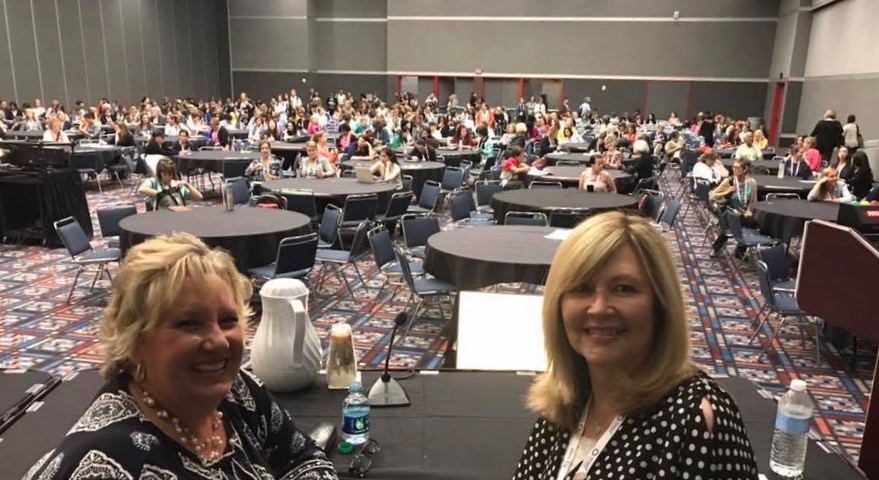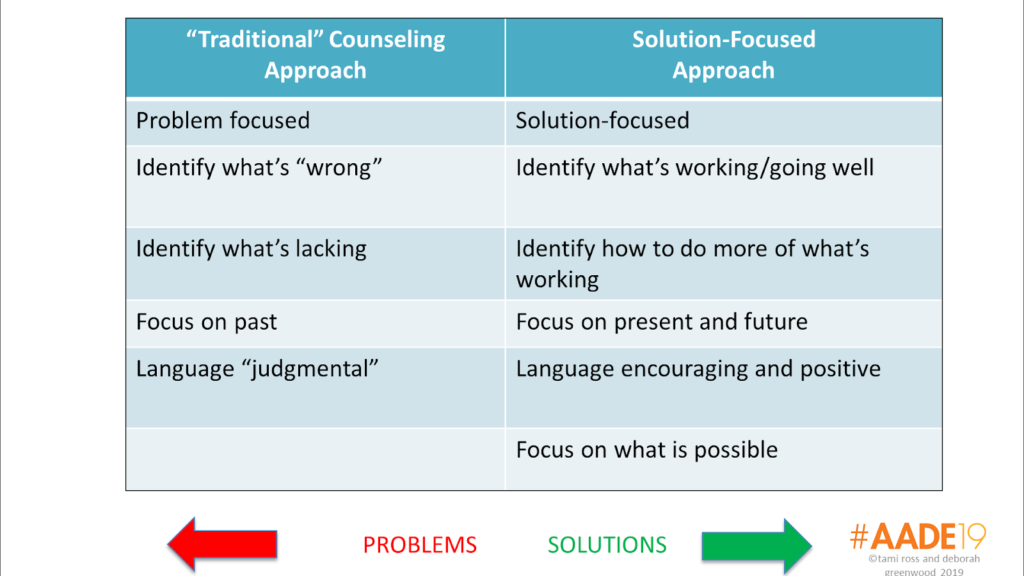Remember that any exercise is better than no exercise. – Anonymous

Pisgah National Forest in the mountains of Western North Carolina. It was a beautiful hike to the falls!
Welcome to week 2 of our 7-week series on applying a solution-focused approach to the AADE7 Self-Care Behaviors for managing diabetes. Last week we shared about taking a solution-focused approach to Healthy Eating – you can read it here. Today we’re focusing on Being Active. Being active can take many forms, from simply moving more during the day to intentional bouts of exercise. You can also find ways to incorporate fitness through activities that bring you pleasure or joy (such as our beautiful hike to the falls pictured above).
As a refresher, the AADE7 is a framework for organizing diabetes self-management education and support, as well as for identifying key areas for behavior change to manage diabetes. The 7 core behaviors are:
Our series is focusing on “flipping” the conversation from a “problem focused” (traditional medical) approach to a solution-focused conversation.
AADE7 Self Care Behavior #2: Being Active
“I hate to exercise” may be a familiar comment heard by many diabetes care and education specialists (DCES). (In fact, it’s the title of a great book too, The I Hate to Exercise Book for People with Diabetes) For those who are challenged to fit physical activity into their day we feel empathy and understanding because some days it’s a challenge for us too! Life happens!
Some people are born athletes. And physical activity may always be a priority them. If you fall into that category, you might find it hard to understand the challenges other people face with being active. If you can relate, try to take a step back, and think of something that is really challenging for you to engage in. Then try to keep that frame of reference when you’re talking about being active with your clients.
Beyond lack of enjoyment in exercise, finding time to fit physical activity into a busy, challenging day, can also be hard. As DCES’s, solutions that we may generate and propose to others, may not always be realistic. Using solution-focused talk, together, we can help clients identify what they like, and what makes sense to them. We can also guide them in identifying things that make them happy, and find existing strengths. From there, we can help them create opportunities to be active.
It’s important to take care to refrain from “all or nothing” thinking, described by Adam Brown in his book Bright Spots and Landmines (we interviewed Adam here). We need to help clients take small steps towards a more active lifestyle and acknowledge their success, even if it doesn’t align with our thinking of what being active means. Let’s flip the focus of the discussion and help people feel successful and recognize their strengths.

Instead of focusing on what is not working well or what is “wrong”, here are 3 illustrations of how to flip the conversation:
Try this: I know how hard it is to have a job where you sit at the computer all day. Tell me more about your office and work setting. Let’s think of some ways you can increase your movement and get you up from your chair.
Instead of this: Did you know sitting is the new smoking, sitting all day is going to kill you. You need to move more.
Try this: You mentioned you’ve been using the MapMyWalk app on your phone. How has this helped you be more active? What else can you do to be more active?
Instead of this: You’re using the MapMyWalk app but you still not getting 10,000 steps a day.
Try this: When you’ve been successful adding physical activity into your schedule, what did that look like? How did you do it? How can you do more of that?
Instead of this: You’re falling short of the goal of getting 150 minutes of exercise each week..
Focus most of the time and energy on thinking about and discussing what is already good, effective, and successful.
During a solution-focused conversation, the DCES’s focus is on discussing and exploring what is already working, is effective, and is successful, then leveraging that to identify solutions, rather than focusing on past problems.
When you meet again, here are 3 follow-up questions to try:
- How were you able to focus on solutions to try to fit fitness into your schedule?
- What kept you on track toward achieving your activity goal?
- What was different about the days you were able to be more active?
We’ll challenge you each week to try incorporating some flips into your conversations and let us know what impact they have.
Join us next week as we discuss a solution focused-approach to Healthy Coping!
We welcome anyone interested in our approach to Subscribe to our blog and we’ll email you when a new post is published!
If you are a health care professional and interested in learning more about our solution-focused practice and approach, when you subscribe to our blog, we’ll send you in return a FREE resource of 10 Solution-Focused Questions to start a solution-focused discussion with your clients.
Follow us on Twitter and Instagram @AFreshPOVforYou




